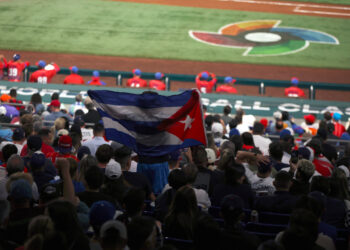It is impossible to be indifferent to Havana; the former gateway to the New World still has the almost mystical enchantment of being the window on a whole new universe of humanity and its heritage, seducing those who are looking for more than sun and sand.
For those of us who come from “the provinces,” or other corners of the world, entering the Villa de San Cristóbal de La Habana (the Cuban capital’s colonial name) is like docking at a port where everyday marvels leap to our view, or lie in wait to be discovered during an urban excursion or in the frank speech of its people.
People say, and rightly so, that Havana is the mecca of magical realism. Strolling down its streets, you discover a city of multiple colors, nuances and history, autos that should be in a museum and not on the road at all hours, and architecture that stands purely on the basis of columns and imagination.
For foreigners, Havana is an ideal starting point to learn about the country. One reason is that in the “capital of all Cubans,” as it is known, Havana natives live side by side with people from the provinces who come in search of new horizons, bringing their culture, religion, and customs and merging them with local ones.
Beyond its historic district—the Havana that lies within colonial-era walls—this city grows, with its traditions, codes, and characters, faithful to neighborhoods that are separated by borders both imaginary and geographic, such as the River Almendares, Havana Bay, and the greenness of Havanas’s Bosque—its Forest.
Abounding in museums, galleries, and thematic spaces to be discovered during the day, Havana at night is also legendary and rich in possibilities: from bars, theaters and “paladars,” to nightclubs that fuse exciting musical vanguards with more traditional styles, including vintage, and dancing ‘til dawn, if that is on the agenda.
In addition to its own particular urban trails, Havana prides itself on its Malecón, or seawall—where this writer spent so many student nights as an aspiring Don Juan; its baseball team, Industriales, loved and hated with equal fervor; and its communities with longstanding marine traditions, such as Cojímar, whose nooks and crannies are haunted by the ghost of Hemingway.
Like that legendary writer, yours truly was also seduced by this city, which I found to be a wonder long before it was described as such in an international contest. In this city, I have grown as a professional, lived in its most disparate neighborhoods, and rambled more than Eusebio Leal, its historian. While not always affectionate, Havana has never stopped giving me reason to love her.
The latest reason, by the way, is my little boy Carlitos, a budding pitcher. I’ve even become an Industriales fan because of him…or might that be another excuse to “pretend” like I’m a Havana native?










